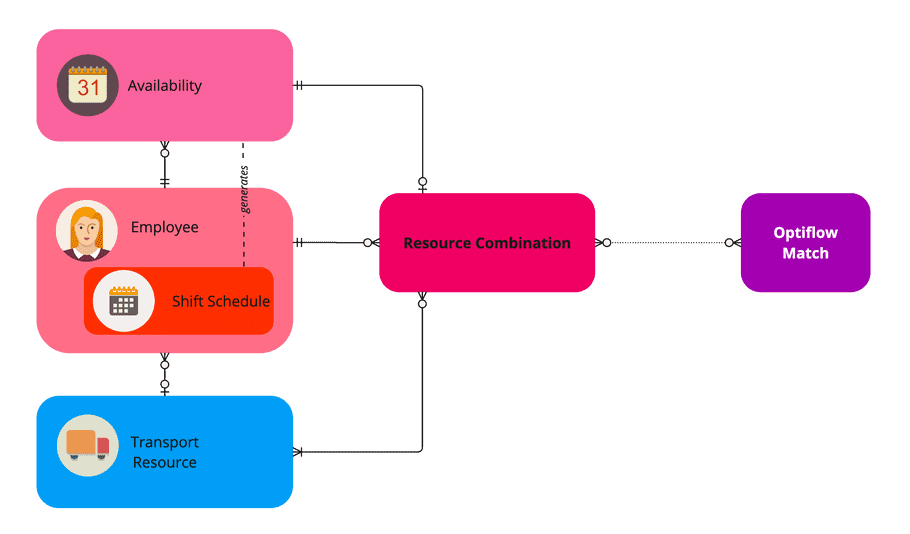Domain
A high-level, functional description of the domain entities and their relationships.
Entities
Employee
Employees represent your staff. An Employee has general identification properties, and planning-specific (driver) skills and properties. The skills and
driver skills become capabilities in the context of a planning. Furthermore, the costs of an Employee will steer the optimization into creating the cheapest
routes.
If your business case involves planing vehicles which are assigned to Employees in post-processing, or your Employees have fixed vehicles assigned to them,
this can be modelled using a fixed assignment on the Employee.
Shift Schedule
You can define a Shift Schedule for an Employee, which describes the recurrence pattern of their Availability. This Shift Schedule can be used for
forecasting Availabilities through the Resource Overview screen in the Resource Management front-end. It is also possible through the front-end to
generate the availabilities for an Employee, as described by their Shift Schedule.
In order to accurately generate Availabilities for an Employee, the Shift Schedule requires the starting information: when does this Shift Schedule
become active? In what week of the recurrence pattern does the Employee start?
Availability
An Availability describes a specific timerange in which the Employee is available for a planning. Creating this Availability allows
Resource Management to look for suitable Transport Resources for the Employee at that interval in time.
Transport Resource
Transport Resources describe your hardware. A Transport Resource has general identification properties, requirements for potential Employees and
planning-specific capabilities. Furthermore, the costs of a Transport Resource will steer the optimization into creating the cheapest routes.
Transport Resources come in three flavors, based on their functional properties:
-
TRUCK: A resource that combines both a pulling unit and a cargo unit into one resource -
TRACTOR: A resource that acts solely as a pulling unit -
TRAILER: A resource that acts solely as a cargo unit
Resource Combination
Resource Combinations can not be directly managed by end-users or integrations. They are the domain entity which results from combining an
available Employee with one or more suitable Transport Resources. The Resource Combination is the entity which is used by the optimization engine. It
aggregates all skills and capabilities of its constituent parts, as well as their costs. A Resource Combination has a deployability, derived from
the Employee's Availability. The deployability is impacted by external factors such as preceding or following shifts, Transport Resource
availability, and so on.
Entity Relationships
